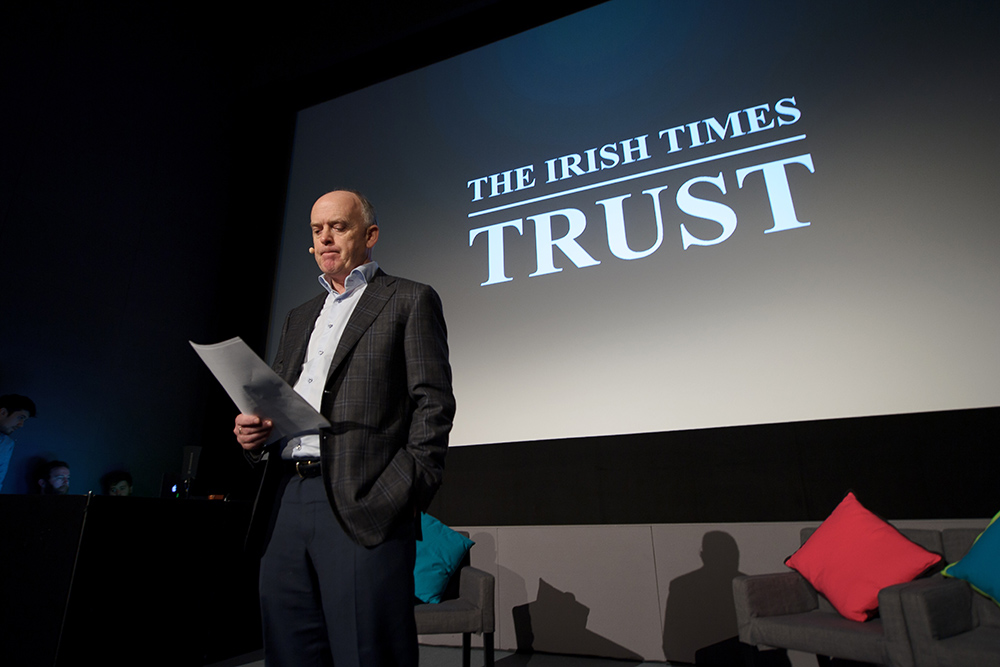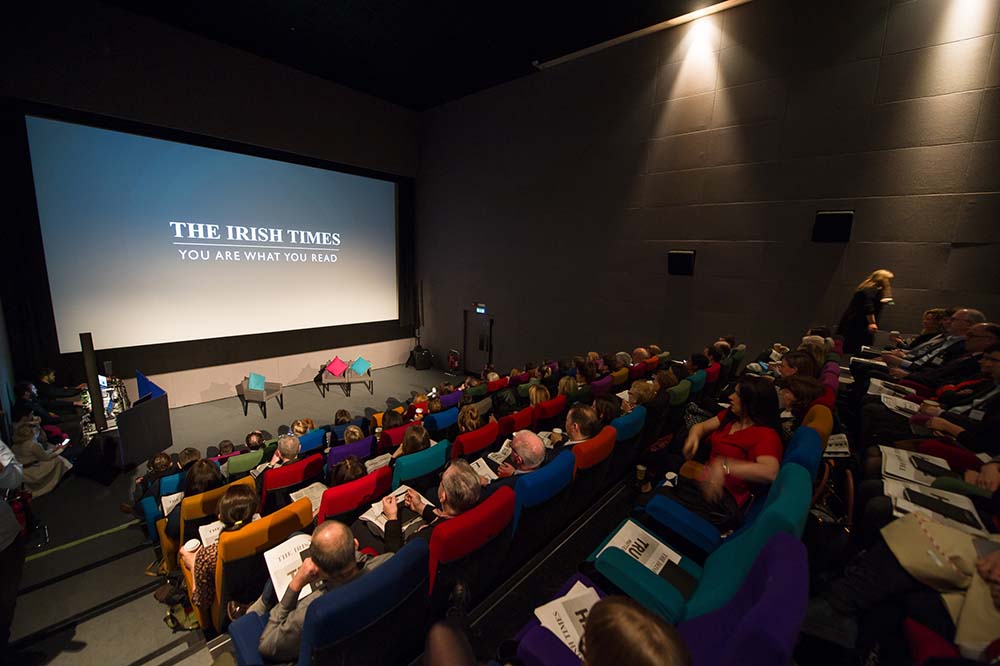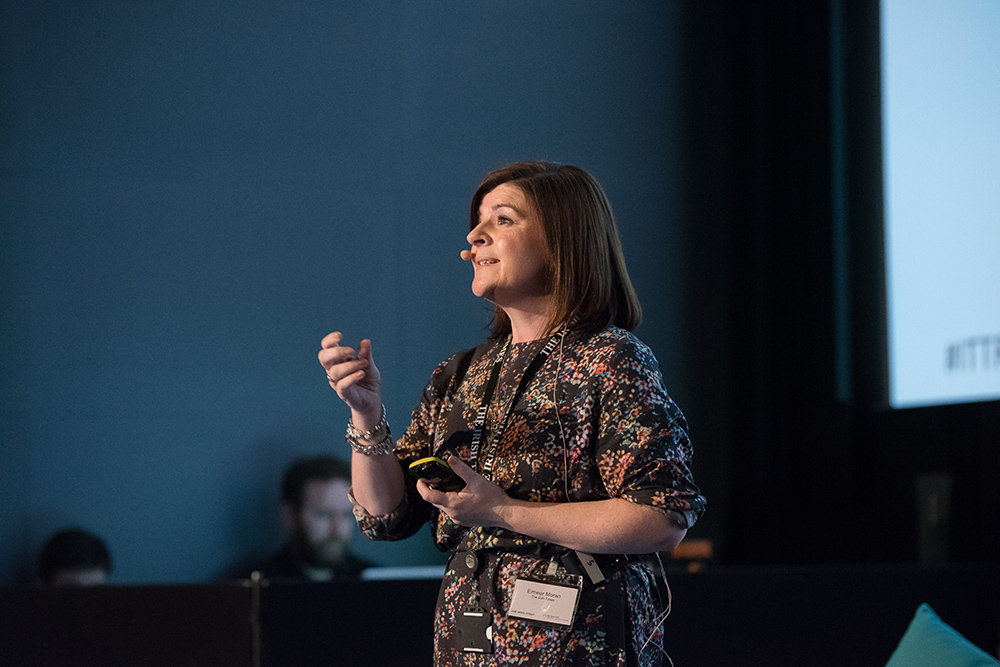
Although the Irish media industry is likely to undergo some profound changes over the coming years – with consolidation a distinct possibility- there’s still lots to play for, as Liam Kavanagh, managing director of the Irish Times explains to John McGee.
Depending on which way you look at it, it’s a very interesting, if somewhat challenging, time to be involved the Irish media industry. With so much going on in terms of new distribution platforms, increased competition, increased media consumption trends and a likely move towards greater consolidation, it would be wrong to write off the media industry just yet.
That’s the view of Liam Kavanagh, managing director of the Irish Times which, apart from its Monday to Saturday newspaper and the IrishTimes.com website, is the owner of brands like MyHome.ie, Irish Times Training, The Gloss, Irish Racing, RewardingTimes.ie and MyAntiques.ie.
“You couldn’t be in a more vibrant, interesting and exciting space than media at the moment,” says Kavanagh.
“I say this internally to a lot to people and I think in years to come, we will look back on this time and say wasn’t it great to have been around when all that stuff was going on -when social media was so ground breaking, when video was coming into its own, when it didn’t really matter what platform you were on as they were all converging into one and the additional cross-platform skills that journalists were acquiring. Also, media consumption, if you could measure it accurately, has never been greater. So, it’s never been more exciting and I think the relevance of media is certainly not in question. In fact, it’s relevance has never been more important and the consumption of content across the different platforms now is just extraordinary,” he says.
The Revenue Model
“What might be in question, however, is the revenue model that goes with it,” he says.
The Irish Times is by no means on its own when it comes to figuring out the right business model for the digital age and while digital revenues continue to grow in Tara Street, the reality is that most news brands derive most of their income from sales of print advertising and circulation, both of which have been under considerable pressure for some time.
The company’s most recent set of results, which covered 2016, show that the company made an operating profit of just over €1m, compared to an operating loss of €1.1m in 2015. The operating profit was achieved on revenues of €82.1m. While traditional print revenue and circulation revenues were down, digital revenues across the board were up says Kavanagh.
“Digital revenues in 2015 were about 15% of publishing revenues but in 2016 they rose to 17.5% and so far, this year they are just tipping off 20%,” he says.
The Digital Age
“Digital revenues continue to be a key driver for us – particularly in areas like paid-content and digital subscriptions which continue to grow. This brings us back to our pay-wall strategy and whether or not it was the right thing to do. I’ve always argued that it was the right thing to do for us and there are people who will pay for quality content. At the end of 2016, we had around 53,685 digital subscribers. Our target was to get above 60,000 and we achieved that during the Summer. Now, it’s over 61,000 and it’s still growing and we are happy with that. If we just take the year-to-date the fall in newspaper sales revenue is offset 100% by growing digital subscriptions. So, that whole thing is working and has given us a more direct relationship with our readers and allows us to focus on them as customers and to build relationships.
In the past our readers used to buy the paper, take it home, read it and that was it. The publisher didn’t know who they were and from a commercial perspective, it made it difficult to target them or treat them as customers and not just readers.
“It’s a different model to the old days when readers had very little relationship with the papers they bought. They went into a shop, bought the paper, took it home and read it and that was it. The publisher didn’t know who they were and from a commercial perspective, it made it difficult to target them or treat them as customers and not just readers,” he says.

“Now, through analytics and data, we can better understand readers’ consumption habits, the times of day they log on and what they are interested in. So, we have gone from a model of trying to attract them and to bring them in, to trying to keep them and retain them and trying to minimise churn to one where which is effectively like a membership model where we make the reader feel like a customer and where they start to value the service that they get from the Irish Times. But it must be grounded in the core product and they must be happy with what they are getting on a day-to-day basis and that it satisfies their needs. And that does come down to content, it does come down to news, politics, business and sport. But it’s those extra little things that you can layer in on top of that, that will actually make people stay. So, we are trying to get to a point where the Irish Times is your life companion: it does all those things for you in terms of news and information but also does other things in terms of lifestyle, travel, leisure, reader rewards, holidays and experiences. And then it’s about making that customer feel a bit special. For example, recently we held an event for subscribers and we invited them to a dress rehearsal for a play that’s coming up in the Dublin Theatre Festival. I hope those people felt special afterwards as they got be part of something different and something that they wouldn’t have felt part of before. So, we will have more of these kind of reader events in the future,” he says.
With digital subscribers on the increase, the other digital piece is advertising and how the market is evolving with more and more revenue being sucked up by digital giants like Facebook and Google. And then there’s the many questions that still hang over programmatic advertising and its ability to deliver not only for publishers but advertisers as well.
“I think programmatic is still unproven but I think 2017 is the year in which the phenomenal of the agency trading desk is coming more and more into play. I think it’s too early to say if programmatic will settle down or not. One thing is certain and that it has definitely pushed us much more towards developing our own branded content and into looking for a more direct brand relationship with advertisers. Through programmatic trading desks, you are not necessarily interacting with the publisher as the provider of the audience and I don’t think that’s in the best interest of the Irish Times. So, we are looking to try and expand and enhance the direct brand relationships we have and through that to try and expand our digital revenues,” says Kavanagh.
Pursuing a more direct relationship with the advertiser might ruffle feathers in agency land but many would argue that it is a necessary step, particularly for media brands that have a paywall and a reservoir of data on their customers.
“I suppose you have a situation now where you could argue that the advertising sales community in news publishers is trying to sell to people who have less and less control over the sales decision and that sales decision is increasingly being made by a trading desk and through programmatic advertising. So how can you get to the real decision maker?” he asks.
The Content Studio
One of the key drivers of the company’s digital growth over the past 12 months has been the Irish Times Content Studios (see panel) which creates branded content for advertisers. With branded content very much in vogue amongst advertisers and agencies, who are also seeking to get in on the act, one could argue convincingly that publishers have the upper hand in the content creation business.
“Content Studio is a key platform for us and I think we have created some really good and award-winning content for brands. Branded content is one of those changes that I referred to earlier that makes it interesting from an industry perspective. There is a huge appetite for content amongst consumers and brands and it’s much more interesting than selling just a page or two of ads. So, we will be trying to build on that because it also goes back to the piece about connecting a brand to the reader and, underpinned with our data and analytics, we can do that much better and more effectively than ever before,” he adds.
The Trust Factor
Possibly one of the biggest things that established media brands like the Irish Times have in abundance in trust, something that ought to be more highly valued by brands at a time of fake news, ad fraud and brand safety. But at a time when brands are under pressure, programmatic advertising accounting for an increasing amount of ad spend and trading desks calling the shots, trust is often overlooked.
“I’m not sure it’s getting through enough to brands,” says Kavanagh.
“Advertising is already under a lot of pressure from the likes of Facebook, Google and other social media platforms who have disrupted the model. The advertising community’s response to this is programmatic trading and as we have seen, this is far from perfect and the whole model is now coming under greater scrutiny. As to what will emerge from it all, I am not sure but I think from a marketer’s point of view they should be looking through all of this to see who can provide that level of trust together with an audience. From an Irish Times’ perspective, that’s exactly what we can deliver and we have the data to back it up. The trust piece is very important in all of this and apart from the quality journalism for which the Irish Times is known for, we also offer a safe environment in which advertisers can engage with their audience and our customers. So, with the passage of time we’d hope that that this will win out, concludes Kavanagh.
 Deirdre Veldon, deputy editor, The Irish Times
Deirdre Veldon, deputy editor, The Irish Times
In the age of media fragmentation and an abundance of online channels and social media platforms from which people often depend on for their news, the issue of trust is coming more and more under the spotlight.
With social media algorithms, filter bubbles, fake news and echo chambers weaving their way into mainstream media narrative however, trust will always be the cornerstone of quality media.
While the Irish Times has undergone many changes in its evolution into a multi-channel news publisher, the one constant – across all channels – has been its commitment to deliver insightful and, above all, trustworthy news, according to deputy editor Deirdre Veldon.
“We have continued to invest in our journalism and developed and changed its presentation for the digital world. Major news events are now covered live online, through video and podcasts and through news and analysis on our website and in the paper. But even though we must react more quickly, our core values of checking and verifying news and trying to give our audience a clear and unbiased account remains,” she says.
“One of our key abilities, in an environment where people are getting news from a whole variety of sources, is to provide authoritative reports and, crucially, put the latest developments in context. We invest heavily in journalism, with staff members having a wide variety of specialisations,” she adds.
According to Veldon, trust in media has declined for several reasons.
“The public is now receiving news from a multiplicity of sources, much of it via social media. Traditional news sources – TV, radio and the print media – are far from perfect, but there is no doubt that the spread of social media has allowed the much-easier dissemination of agenda-driven ‘news’ and commentary, often in a manner which does not separate fact and opinion, or give a fair and accurate context to what has happened.
“So-called traditional media – including The Irish Times – has also had to up its game in response to a whole new range of online competitors and to adapt our strengths in news-gathering, analysis and commentary to find new ways to deliver news to today’s audience. We have to clearly communicate the values and standards which we maintain to differentiate ourselves in this new media landscape and find ways to engage with our audience and listen to what they are saying,” she says.
“Trust in media is essential, not only for the media itself but also for wider society. Media has a key role in a democracy, questioning government, business and others and holding them to account. This is an important balance and a safeguard for the electorate. The aggressive approach of President Trump to the media shows that it cannot be taken for granted and that publishers of all kinds have, at times, to be assertive in putting forward the value of what they do,” she concludes.

Eimear Moran, Media Solutions Director, The Irish Times
As it approaches its second anniversary, the Irish Times Content Studio has developed a strong position in the branded content space, having worked with a wide variety of brands and media agencies in the intervening period.
“When we went to market we wanted our proposition to be based on delivering excellent content to the right audience and thus ‘crafting brand stories worth sharing’ became our mantra,” says Eimear Moran, media solutions director with the Irish Times.
“Along with that, it is important that our readers could trust us and that they could easily identify sponsored content,” she adds.
“And then they could make an informed to read the content and engage with the brand in question. This has proven to be exactly the right path and both our data and RAM research (Reader Analysis of Media) have shown our readers engage and share when relevant to their lives or are learning something new. Utimately relevancy has become fundamental to the success of our content studio offering,” she says.
Behind the scenes, the role data plays also means that it can get this content to the right audience she says.
“The more we become a data informed company the easier it is to get closer to our audience and their potential topics of interest,” she adds.
“Crafting brand stories worth sharing became our mantra.”
“Through collaboration with both agencies and directly with brands we’ve had phenomenal success, winning global recognition for our work with PHD on Vhi Let’s Talk About Fertility and both global and local awards for our work with Mediacom on Audi’s Best of Both Worlds. We couldn’t have imagined the reach and reaction our work in this field has created or that it would grow beyond the printed word, turning into our management of video, brand events and podcasts.”
Over the course of the last 20 months she says Irish Times Content Studios has worked on hundreds of stories which have delivered a combined 3m article views and 15 years of article consumption time across motors, travel, food, beauty, retail and more.
“The best examples of our work have involved collaboration with every stakeholder, because it allows you to fully understand the heartbeat of a brand and what the client’s expectations are. It also allows for transparency in the process, frank discussions and an opportunity to evolve the campaign along the way,” says Moran.
First published in Irish Marketing Journal (IMJ September 2017)© to order back issues please call 016611660

























